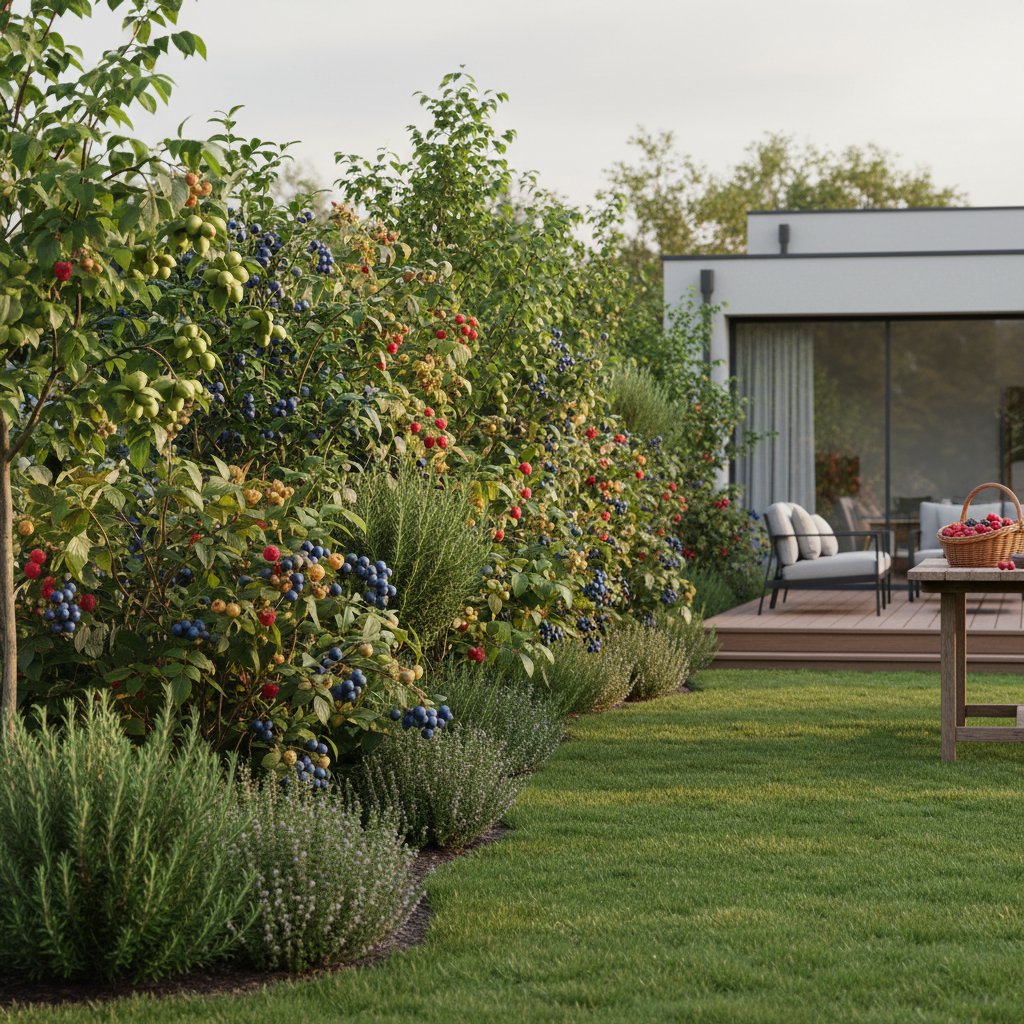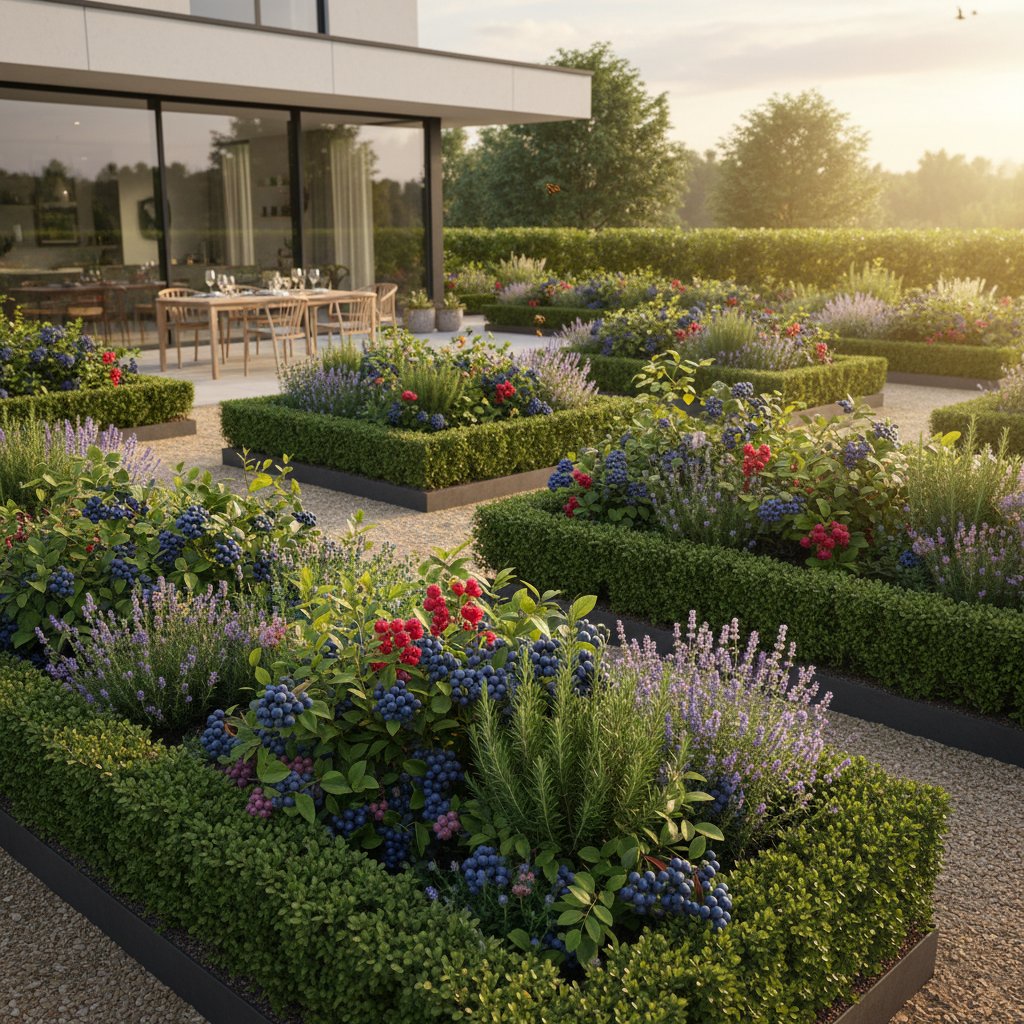Edible Hedges: Blending Privacy, Beauty, and Bounty in 2025
Gardens reflect the lives and aspirations of their caretakers. Some feature neat lawns and sharp edges, while others embrace a touch of wildness filled with buzzing insects and maturing fruits. Through years of observation, the landscapes that deliver true fulfillment combine visual appeal with tangible returns. Edible hedges embody this principle by integrating seclusion, aesthetics, and productivity into a single, purposeful element.
Understanding Edible Hedges
An edible hedge serves as a functional border composed of plants that deliver both form and nourishment. Rather than relying on static evergreens like boxwood or privet, these hedges incorporate fruit-bearing shrubs, aromatic herbs, and nut producers to form a dynamic screen. Such hedges delineate property boundaries, surround vegetable plots, or temper the harshness of fences, all while yielding berries, nuts, or greens for culinary use.
This concept excels in its versatility. It provides the shelter of a traditional hedge yet yields edible rewards through diligent tending. Homeowners often discover profound contentment in this harmony of form and function, recognizing that gardens can adorn spaces while sustaining them.
Selecting Suitable Plants
Plant selection for an edible hedge hinges on local climate, soil conditions, and privacy requirements. Certain varieties achieve significant height and density for effective screening, whereas others remain compact for edging pathways or beds. Evaluate both structural qualities and culinary potential during the planning phase.
Consider these proven selections:
- Blueberries: These reach 4 to 6 feet tall with lustrous leaves and vivid fall foliage. They thrive in acidic soil with pH levels between 4.5 and 5.5, producing sweet berries from mid-summer onward.
- Raspberries or blackberries: These vigorous growers extend 5 to 8 feet and demand trellising to contain their spread. Harvests peak in late summer, offering tart-sweet fruits ideal for jams or fresh eating.
- Hazelnuts: Rising to 10 feet or more, they form robust frameworks with delicious nuts ripening in fall. They adapt to various soils but prefer well-drained sites.
- Currants or gooseberries: Suited to temperate zones, these 3- to 5-foot shrubs bear jewel-like fruits in early summer. Red, black, or white currants add ornamental value alongside their tangy flavor.
- Rose hips: Hardy to 6 feet, these yield vitamin C-packed hips in autumn. Their thorny stems deter intruders while attracting bees with summer blooms.
- Herbal underplantings: Tuck in rosemary for evergreen structure up to 4 feet, lavender for pollinator support and fragrance, or sage for textured gray-green leaves and savory leaves.
Optimal arrangements layer taller backbones with low-growing fillers. This method enhances visual depth and fosters a thriving, naturalistic profile.
Harmonizing Form and Utility
Edible hedges evolve gracefully across seasons, enhancing garden interest year-round. Spring unfolds with flowers and emerging foliage, summer bursts with fruits and verdant expanses, autumn paints with hues and yields, and winter reveals structural silhouettes hinting at renewal.
Achieve equilibrium by matching plant vigor to site constraints. For patio-adjacent privacy, opt for restrained growers like blueberries over expansive blackberries. In confined areas, evergreen herbs preserve tidiness; in expansive settings, diverse mixes evoke a modest orchard.
Align with these stylistic approaches:
- Rustic style: Combine thorny brambles, cane fruits, and indigenous shrubs for an untamed edge.
- Formal style: Space uniform shrubs and prune selectively to uphold geometric lines.
- Cottage style: Layer softly with vibrant blooms, varied textures, and aromatic elements.
Select a style that echoes your property's overall motif. This integration ensures the hedge appears deliberate and timeless.
Essential Care Practices
Edible hedges flourish under consistent upkeep, particularly during initial establishment. Provide regular irrigation to support root development, apply mulch to conserve water, and perform gentle pruning to shape the framework. As maturity sets in, focus on annual tasks like trimming and nutrient replenishment.
Master pruning techniques to sustain productivity. Eliminate aged canes that block light to new growth, targeting one-third removal each year to stimulate basal shoots. Layer 2 to 3 inches of organic mulch around bases to deter weeds and stabilize soil moisture, supplemented by compost applications in spring.
Address pests proactively. Net fruits against birds during peak seasons, or dedicate surplus plants to wildlife. Diversity in species draws predatory insects, minimizing outbreaks through natural checks.
Creating Unified Designs
Cohesive gardens avoid clutter by employing repetition and flow. In an edible hedge, echo plants or hues along its span for seamless continuity. For instance, intersperse blueberries with rosemary to yield recurring blue-green tones punctuated by fruit cycles.
Curate palettes thoughtfully. Sage's silver foliage contrasts currants' deep green, while raspberry red stems gleam amid hazelnut heights. Test combinations under varying sunlight, noting how morning glow or dusk softens edges to reveal a garden's essence.
Integrating into Daily Life
An established edible hedge weaves into household routines seamlessly. Pluck berries en route to the door or snip herbs for meals, turning maintenance into moments of harvest. This integration fosters a bond with the space, blending utility with subtle delight.
Begin modestly if embarking on this project. Install a brief segment beside a path to gauge growth patterns, sunlight exposure, and maturing aesthetics before scaling up.
Harvesting Lasting Rewards
Edible hedges transcend mere utility, symbolizing the fusion of shelter and sustenance. As they mature, they deliver layered textures, seasonal colors, fresh provisions, and enveloping sanctuary. Choose compact precision or exuberant variety, and cultivate a garden that nourishes physical well-being and emotional renewal.



